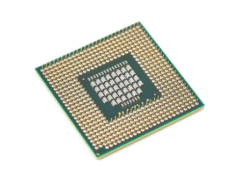Becoming a successful blogger involves several steps, from choosing a niche to consistently creating quality content. Here’s a step-by-step guide to get you started:
1. Choose Your Niche
Identify your interests and expertise:
– Passion: Choose a topic you are passionate about.
– Knowledge: Ensure you have enough knowledge to create valuable content.
– Audience: Consider the potential audience and their needs.
2. Set Up Your Blog
Select a blogging platform:
– Popular options include WordPress, Blogger, and Medium.
– WordPress.org is recommended for full control and customization.
Choose a domain name:
– Keep it short, memorable, and relevant to your niche.
Get web hosting:
– For WordPress.org, you’ll need hosting (e.g., Bluehost, SiteGround).
Install WordPress:
– Most hosting providers offer one-click installation for WordPress.
3. Design Your Blog
Choose a theme:
– Pick a responsive and visually appealing theme.
– Customize it to match your brand.
Add essential plugins:
– SEO (Yoast SEO)
– Analytics (Google Analytics)
– Security (Wordfence)
– Performance (W3 Total Cache)
4. Create Quality Content
Plan your content:
– Develop a content calendar.
– Focus on topics relevant to your niche.
Write high-quality posts:
– Write engaging and informative articles.
– Use images, videos, and infographics.
– Proofread and edit before publishing.
5. Optimize for Search Engines
On-page SEO:
– Use relevant keywords.
– Optimize titles, headers, and meta descriptions.
– Use internal and external links.
Off-page SEO:
– Build backlinks through guest posting, social media, and networking.
6. Promote Your Blog
Social media:
– Share your posts on platforms like Facebook, Twitter, and Instagram.
Email marketing:
– Build an email list and send newsletters.
Engage with your audience:
– Respond to comments and messages.
– Participate in online communities related to your niche.
7. Monetize Your Blog
Advertising:
– Use Google AdSense or other ad networks.
Affiliate marketing:
– Promote products and earn commissions.
Sponsored posts:
– Collaborate with brands for sponsored content.
Sell products or services:
– Offer your own products, courses, or consulting services.
8. Analyze and Improve
Track performance:
– Use Google Analytics to monitor traffic and user behavior.
Evaluate and adjust:
– Analyze which content performs best.
– Adjust your strategy based on data insights.
Additional Tips
– Consistency: Post regularly to keep your audience engaged.
– Networking: Connect with other bloggers and influencers.
– Learning: Stay updated with blogging trends and SEO practices.
Starting a blog takes time and effort, but with persistence and dedication, you can build a successful platform.
















